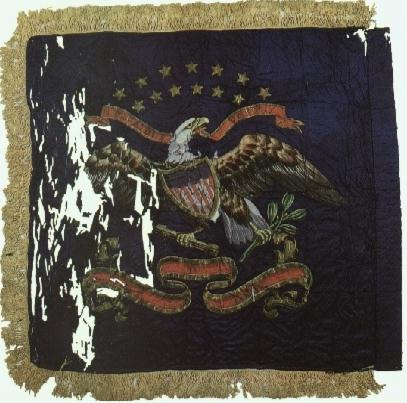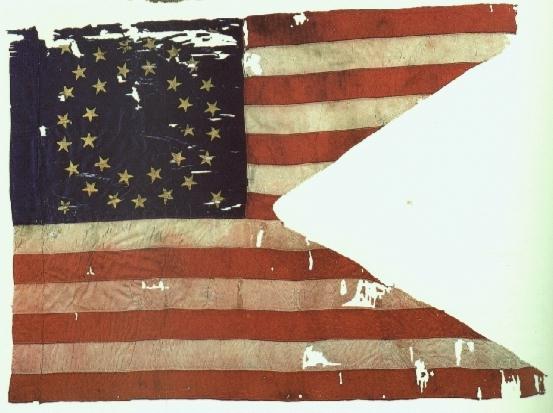|
MENUS! STOREFRONTS! Guide book STILL Available - Order Now!
|
|
Custer's Last Stand ... The Finale!


John Stands-In-Timber, a Cheyenne historian, has a very early account of Custer moving along the ridge, past the northern end of the village, and descending to the river near a ford (near the present day National Cemetery) and pausing there for 20 minutes or so. Largely discounted, the new evidence indicates that this indeed did happen. Undoubtedly, Custer was killing time awaiting Benteen�s arrival. He never showed. With Kanipe & Martini dispatched, Custer sent companies E & F (hereafter referred to as the Left Wing) down to the river at Medicine Tail Ford to investigate. The remaining 3 companies, C, I & L (hereafter referred to as the Right Wing) stayed on a high ridge overlooking the ford. It is this approach to the river, right at the center of the village, that caused the sudden withdrawal of the Indian warriors just as Reno & Benteen had met atop the bluffs ... and probably spared their lives. Word spread quickly through the village. A mere handful of Indians were there to greet the Left Wing. They mustered up enough gunfire to thwart any attempt by the cavalry to cross there. More and more Indians arrived on the scene. Gall, the Hunkpapa war leader, who had family members killed as bullets riddled his lodge during Reno�s charge, led this influx of warriors. Meanwhile, Crazy Horse, with mostly Oglalas and Cheyenne, moved in a northerly direction, to eventually sweep around the soldiers� right flank. The resistance became too stiff, and the Left Wing withdrew up another draw to a knoll now known as Calhoun Hill. The Right Wing moved along the high ground to reach the same point. Warriors trailed the Left Wing�s movement. Once united, Custer left the Right Wing on Calhoun Hill, using Company L as skirmishers (I & C in reserve) to hold the encroaching warriors at bay, and continued on to the north, with the Left Wing, along the high ridge that connected Calhoun & Custer Hills, looking for another suitable river crossing. He was still in an offensive mode. He discovered another good ford, just north of the village, moved down to it, and then pulled up off the river a bit to wait ... for Benteen. This was the maneuver Stands-In-Timber spoke of. There was a 20 minute, or so, lull. Light skirmishing on Calhoun Hill, where the troops would be plainly visible for Benteen to see, was simply a holding action. At the north ford, Custer would wait until Benteen & his other wing would join him. Then they�d charge the village. It all disintegrated quickly, as a sequence of events took place; briefly, it started on the Right Wing ... Company C pressed forward, toward the river, in an attempt to drive back Indians approaching from that direction; they were routed. Lame White Man, a Cheyenne, led a charge on this flank, disrupting the reserve companies. Though killed in this action, his move turned the tide. Pressure on Company L mounted. They were overwhelmed by Gall�s warriors, cut down where they stood. The onslaught from Lame White Man�s charge pushed Company I to the far side of the ridge, where they were met, head on, by Crazy Horse, and died in bunches. Remnants of all 3 companies fled along the ridge to Custer Hill. It was a scene of utter panic. Meanwhile, the Left Wing was also under attack, though not nearly so severely. Company E, nearest the river, caught the brunt of it, losing their mounts in the process. Due to the Indian pressure on them, plus the fury of the attack on the other wing, Company F, accompanied by Custer & the staff officers, moved up to Custer Hill, protected by the skirmish fire of E Company who formed up in a prone position on the side of the hill. By this time, it was too late to save the day. Joined on the hill with the survivors of the Right Wing, there were now, perhaps, 100 men alive, virtually surrounded by hundreds of warriors. Throughout this fight, the warriors, or most of them, fought on foot, using every gully, ravine & clump of brush as cover. They proved to be VERY difficult targets for dismounted cavalry men, exposed on the hillsides, to cope with. Remember, too, every fourth man would be used as a horse holder, so their ranks, in effect, were reduced by 25% - at least as long as they were able to hang on to their horses. A prime objective of the Indians was to scatter the animals. They were successful. At that point, there was no escape. Using some dead horses as breastworks, the soldiers did what they could. Inexplicably, about 40 suddenly ran, haphazardly, towards the river & the village. They were cut down, many trapped in a "deep" ravine (now known as Deep Ravine!). Others made futile runs to escape in other directions. The fire from the knot of soldiers diminished to the point where the warriors could swoop in and finish the business in hand to hand combat. It was over. Custer�s entire immediate command lay dead; strewn along the ridge, on the slopes, in the ravine. 42, including Custer, his brothers, most of the staff officers, including W.W. Cooke, and several of the company commanders were found on the hill that saw the final action. Lt. James Calhoun, Custer�s brother-in-law, was found at the other end of the ridge, with his Company L mostly still in formation. They had refused to give ground. In all, only 31 warriors were killed on the battlefield (though many more would later die of their wounds, pushing the total upwards of 100), and this figure includes the action engaged in by Reno & Benteen. Yet, 17 warriors were killed here on Calhoun Hill. Company L had made, perhaps, the stiffest resistance. Custer's body was found in a group of about 42 dead, in what appeared to be a defensive posture, near the summit of Custer Hill. He had a bullet wound in the chest and the head. Either could have been fatal. Compared to some of the others, he was mildly mutilated; a gash to a thigh, and and arrow shoved up into his genitals. He was stripped naked, except for his socks and the shoe portion of one boot. When found, two days after the fact, the bodies were sun baked & bloated. Flies abounded. The stench must have been horrific. It is said that his expression was peaceful! On top of that little bit of grassy high ground, known as Custer Hill today, stands a plain monument under which are the remains of most of the fallen troopers. The surrounding area looks much today as it did in 1876. Soon, a monument will be erected nearby - A salute to the Indian warriors who defended their homes that bloody Sunday. Meanwhile, the victorious Indians turned their attention to the besieged men on the bluffs at Reno Hill. Driving back Weir's belated rescue attempt, they forced the surviving members of the 7th to endure another 24 hours of peril. Trapped on the bluff, several cavalrymen earned medals of honor by scurrying down to the river, attracting hostile fire, to gather water for the troopers, many of whom were wounded. Benteen, though possibly derelict in his duty to Custer, was anything but to the remnants of the 7th Cavalry, at one point even organizing a bold charge to drive encroaching warriors back. Late in the day of the 26th, the huge encampment struck their lodges and moved south, in impressive regimental formations, towards the Bighorn Mountains. They had had enough. Scouts reported the presence of even more Blue Coats - the united Terry/Gibbon column - moving cautiously down the valley. The grass was burned before them, and the village moved off to temporary safety. The Battle of the Little Bighorn was over. The next morning, scouting parties from the two army contingents met up, the parched, white bodies were discovered, and the burial details were begun. It was a tragic day. All told, Custer�s regiment lost 268 men. Many of the survivors, Reno, Benteen & Weir among them, never recovered from the emotional trauma. For the Sioux and Cheyenne, though a glorious victory, it was the beginning of the end. The Army�s resolve was strengthened in the wake of this unbelievable defeat that marred the Centennial Celebration. The once again scattered bands were to be hounded relentlessly through the winter. Though not militarily conquered in combat, most bands had no choice but to surrender as lodges were burned, food was short, and women and children had to be considered. Even Crazy Horse�s band surrendered, in an almost triumphant parade, at Fort Robinson in May of 1877. Like Custer, he too would soon be betrayed by his own, and die a most unfitting death. Sitting Bull slipped into Canada for a few uncomfortable years, and then decided to surrender to the U.S. After years on the reservation, he became a scapegoat during the Ghost Dance period, and was killed by Indian police. Soon after, the ultimate tragedy took place at Wounded Knee, and the old ways for these proud people were gone ... forever.
There is no place in the United States like this. Not only is there history and heroism, but there are "ghosts." The place is alive with those who fought and died here on this ground in a still remote area of southeastern Montana. Contributing mightily to this aura is the utter lack of monuments. In their stead are the white markers which mark the place where each dead soldier was found. Coupled with the still stark landscape, much resembling what was in 1876, the effect is a chilling and haunting eeriness. It is a powerful place. Visit!
 The most complete library of books on the subject of the Battle and the people involved can be found here. Support CBHMA!
|
|
|